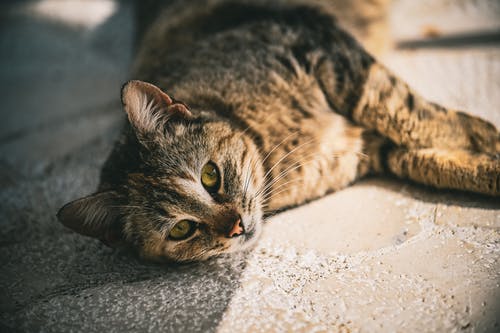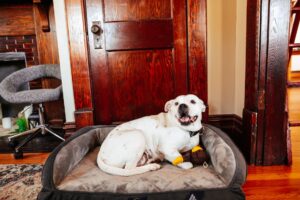Older pets are prone to a variety of health conditions, one of which is fatty liver disease in cats. Fatty liver disease occurs when there is a lipid (fat) accumulation in the tissue of the liver. Oftentimes, there doesn’t appear to be a cause for the ailment, but researchers feel that it might be a result of the way the cat’s body metabolizes fats and proteins.
The typical scenario of liver disease in cats usually follows a pattern. First, an overweight cat will stop eating, for some reason. Since she is not taking in nutrition, the cat’s body will begin sending fat cells to the liver, where they will be processed into fuel for energy.
The cat’s liver is not efficient in processing the extra fat, and much of it will be stored in the cells of the liver, instead of being processed. If you don’t treat liver disease in cats, the liver will eventually fail and the cat will die.
The symptoms of fatty liver disease are commonly seen: a cat that used to be a voracious eater suddenly quits eating, and she loses weight. She may vomit and/or salivate excessively. She may also show jaundice, which is a yellowing of her skin and eyes, and she will probably be very lethargic, not wanting to exert herself.
Losing weight and jaundice can be symptoms of other diseases, such as pancreatic disease or liver cancer, so liver disease in cats can only be diagnosed accurately with blood work. If your veterinarian draws a complete blood profile, it may show an increased level of liver enzymes. The diagnosis of liver disease can be checked by a liver biopsy.
You can reverse liver disease in cats if you catch it early enough. The treatment consists of changes to your pet’s diet, and this usually works well to reverse the condition. You basically will have to force-feed the cat sufficient nutrients to reverse the malfunction in metabolism that caused the disease. This can be done with a feeding tube that your veterinarian will insert into your cat’s stomach or esophagus. Then you will need to blend a special diet and feed your cat via the tube a few times a day.
After three to four weeks of tube feeding, you can start offering solid food again, to see if the cat will accept it. Then you can gradually transition the cat back to solid food over a period of another six weeks or so. The tube should not be removed until your cat shows a healthy appetite for regular cat food.
If you don’t want to fuss with a g-tube, you can feed the cat with a syringe, into the mouth. Whichever way you choose, it will take a lot of time and patience to bring back a cat from liver disease, but she should retain good health if you follow the instructions of your veterinarian.




